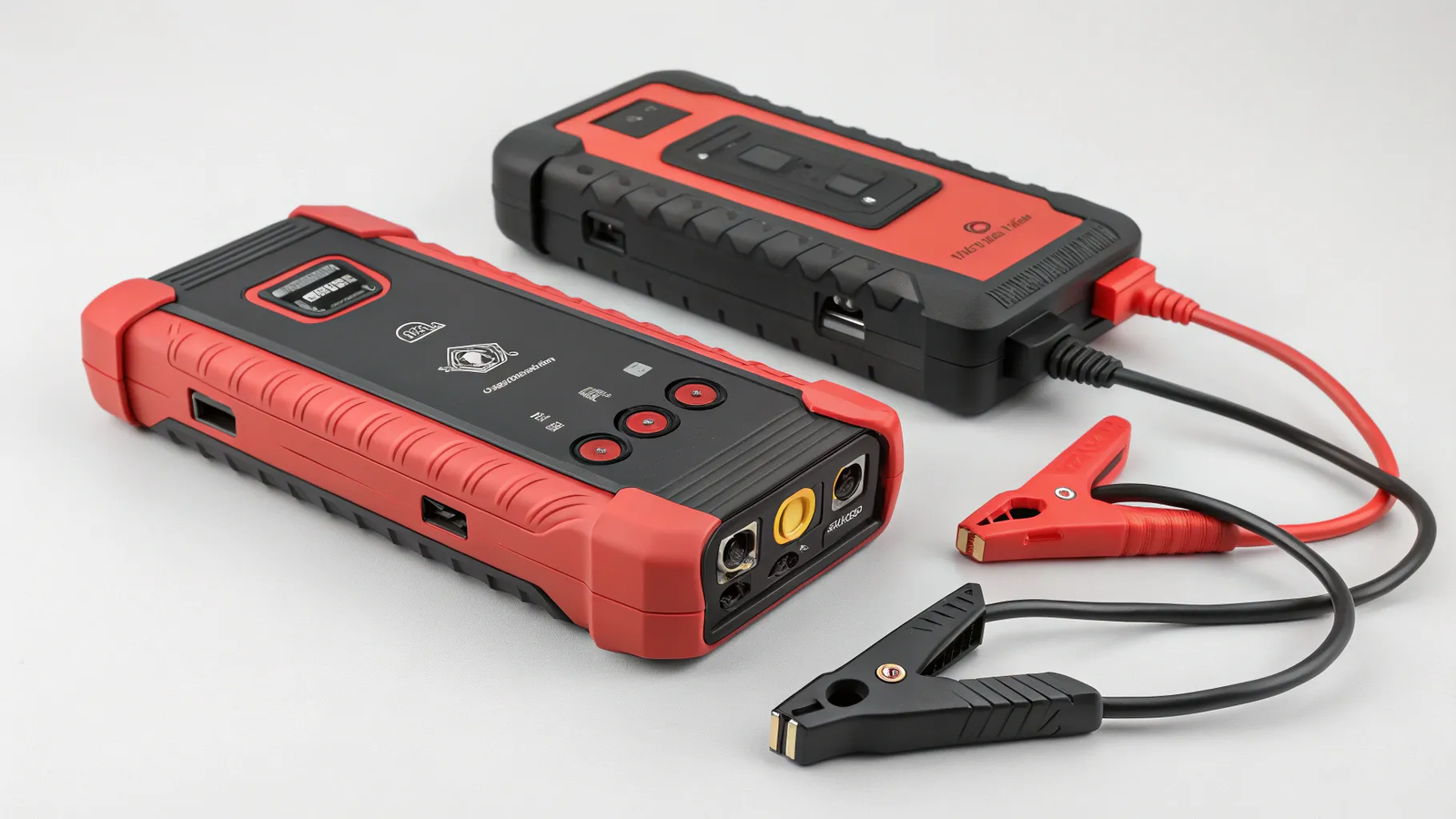NOCO Boost GB40 vs GBX45 (2025): Hands-on comparison of two popular 12V lithium jump starters. We tested ports (USB-C vs USB-A), clamps, indicators, flashlights, and usability so you can choose the right pack for your car, truck, SUV, or boat.
In this article I walk through a side-by-side comparison of two popular NOCO Boost jump starter packs: the NOCO Boost X GBX45 (1250A) and the NOCO Boost Plus GB40 (1000A). I put both units next to each other, tested ports, clamps, displays, and usability, and I’ll share what I found so you can pick the right one for your needs.
Table of Contents
- 🔋 Quick summary
- ⚙️ Design and ports
- 🧰 Clamps, connectors, and jump procedure
- 💡 Display, safety indicators, and boost mode
- 🔦 Flashlight and other practical features
- 📏 Size, weight, and carry case
- 🧾 Who should pick which model?
- ✅ Final thoughts
- ❓ FAQ
🔋 Quick summary
Both of these are solid, compact 12V jump starters designed to be portable power backups and emergency starters. The main differences you’ll care about:
- Power: GBX45 = 1250 amps; GB40 = 1000 amps.
- Charging: GBX45 uses USB-C in/out (USB-C Power Delivery, faster charging); GB40 uses USB-C input (recharge) and USB-A output for devices.
- Display & indicators: GBX45 has a more detailed LED display and status icons (temperature, reverse polarity, fast charge), while GB40 has a simpler fault LED and basic charge LEDs.
- Size & weight: Nearly identical footprint; GBX45 is slightly thicker (~2″ vs ~1.7″).
⚙️ Design and ports
Both units feel well-built and include the essential ports and outputs to act as a jump starter and powerbank. The GBX45’s USB-C in/out is the standout: you can fast-charge the unit and also use USB-C to power devices.
The GB40 still works fine as a powerbank but charges via USB-C (input) and outputs via USB-A for phones and accessories.
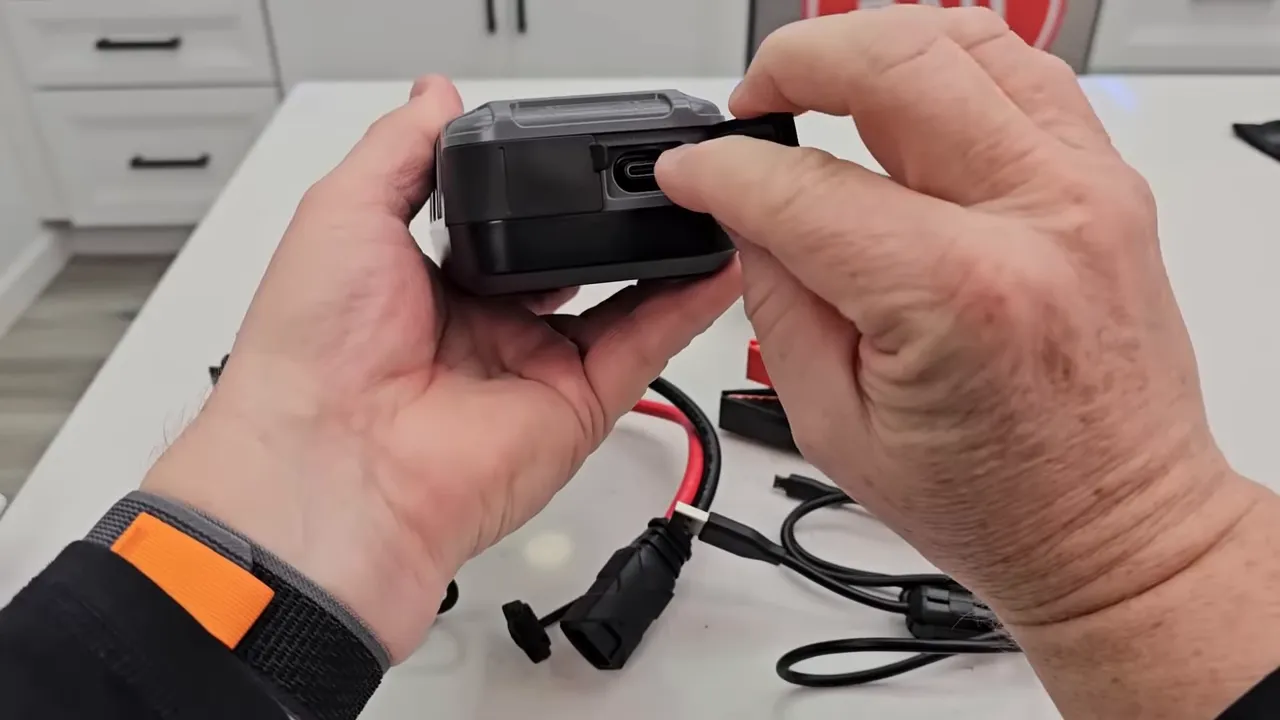
Practical note: USB-C on both models is straightforward; GBX45 supports faster USB-C PD charging and USB-C device output, while GB40 recharges by USB-C and powers devices from USB-A.
🧰 Clamps, connectors, and jump procedure
The clamps and jumper connections are essentially the same on both models — same style clamps and the same plug connection into the pack. They only plug in one way (watch the arrow) and lock in solidly.
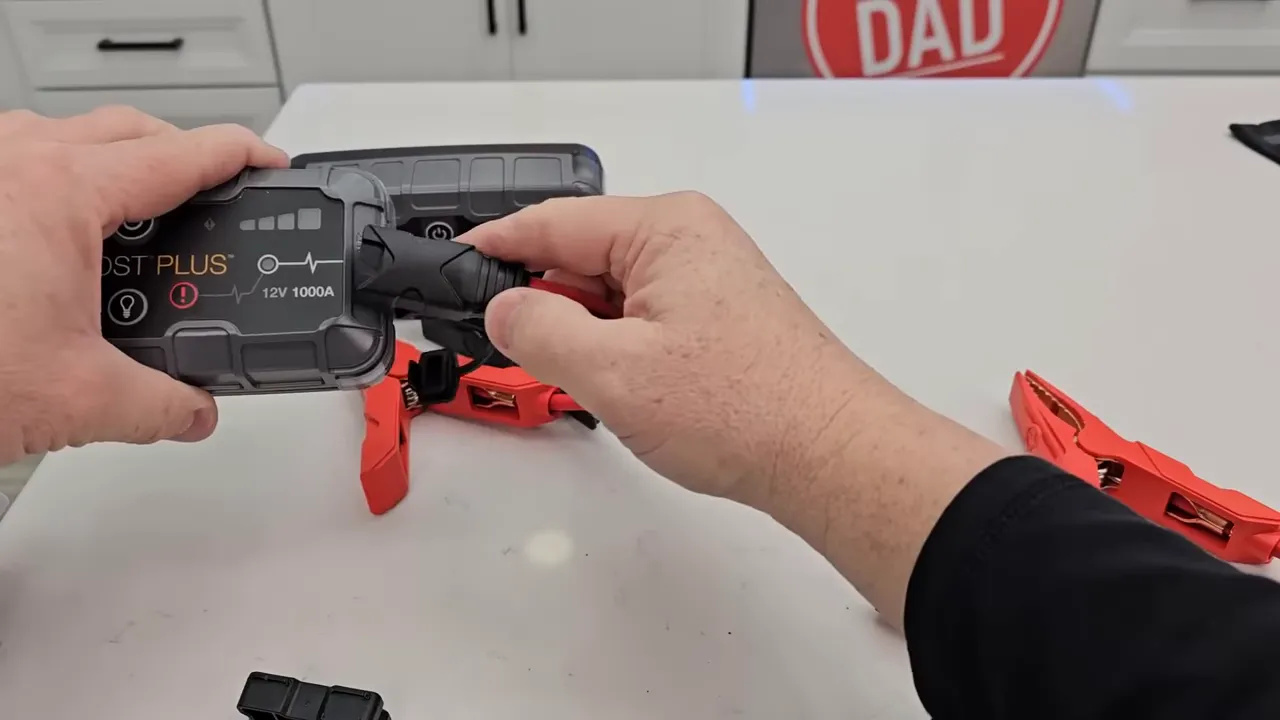
How to use (step-by-step):
- Plug the clamp cable into the pack (align the arrow; it only goes one way).
- Attach the red clamp to the positive battery terminal and the black clamp to negative.
- Turn the jump starter on and then start the car.
Important: The GBX45 has an auto-shutoff behavior — after you turn it on and connect it to the battery, it will turn off after about 60 seconds if the car hasn’t been started. If that happens, you’ll need to power it back on and try again.
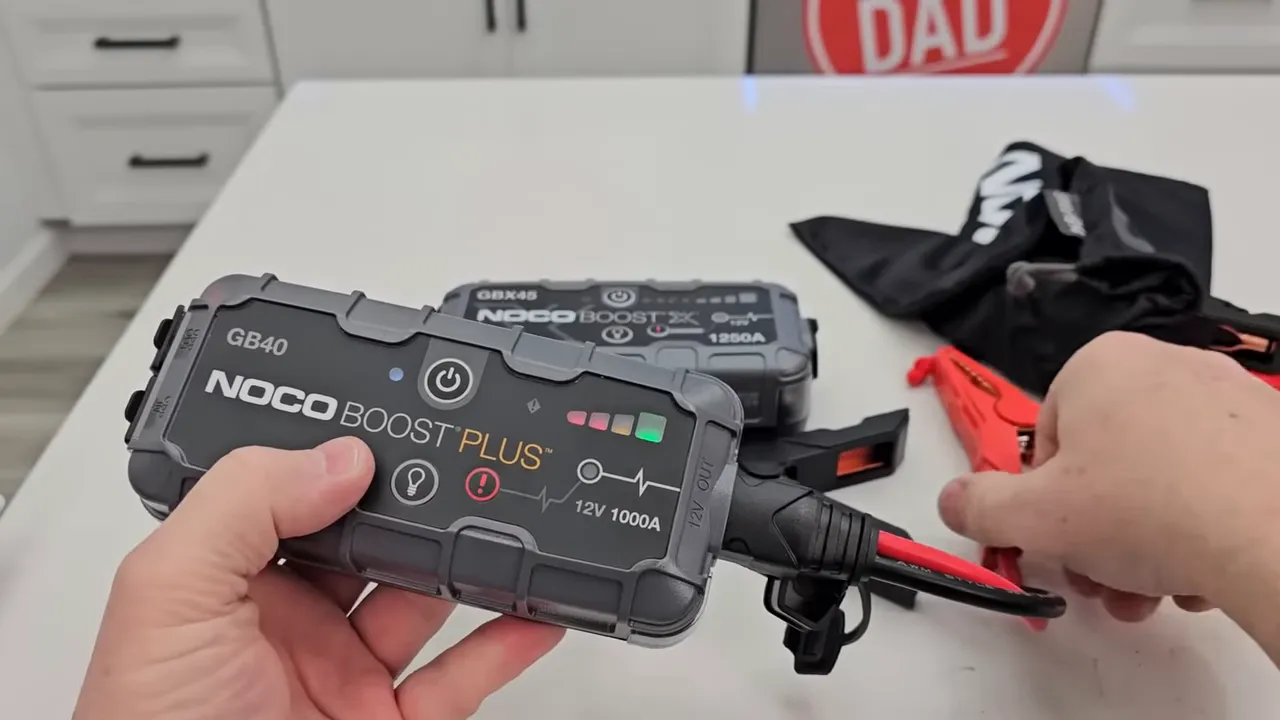
💡 Display, safety indicators, and boost mode
The GBX45 includes a more informative LED cluster and status icons: reverse polarity indicator, a snowflake for ‘too cold’ warnings, a thermometer for ‘too hot’, and a fast-charge indicator for USB-C charging. That extra feedback can save time and prevent misuse.
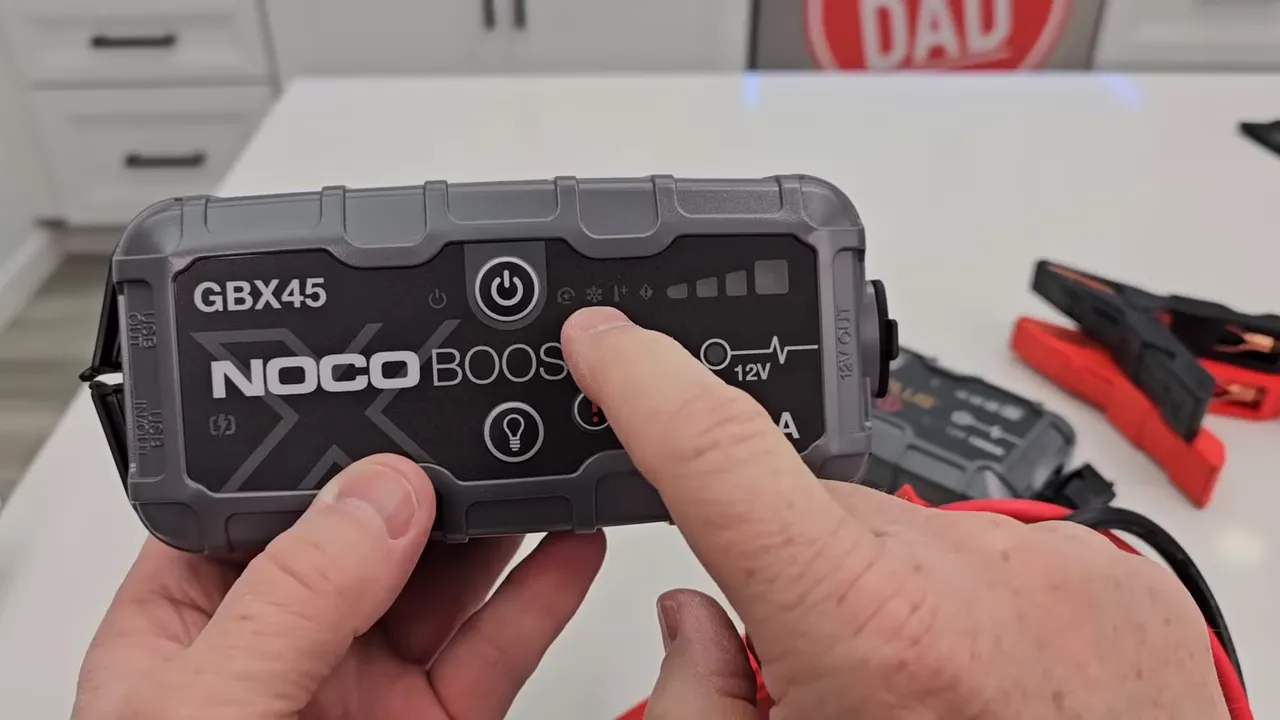
The GB40 keeps things simpler with a single LED fault indicator — it still tells you if something is wrong, but not with the same level of detail. Both units have a boost mode (manual override) to bypass protections when a battery is completely dead; hold the boost/override button to enable it. Use boost only when necessary and follow safety instructions.
“If your battery is completely dead, you’re going to turn boost mode on. Hold this for a little bit. That’s going to bypass the safety protections and turn on boost.”
🔦 Flashlight and other practical features
Both models include a built-in flashlight with multiple modes. Useful for nighttime roadside emergencies. They aren’t identical in mode layout, but both cover basic needs: steady, strobe, and SOS.
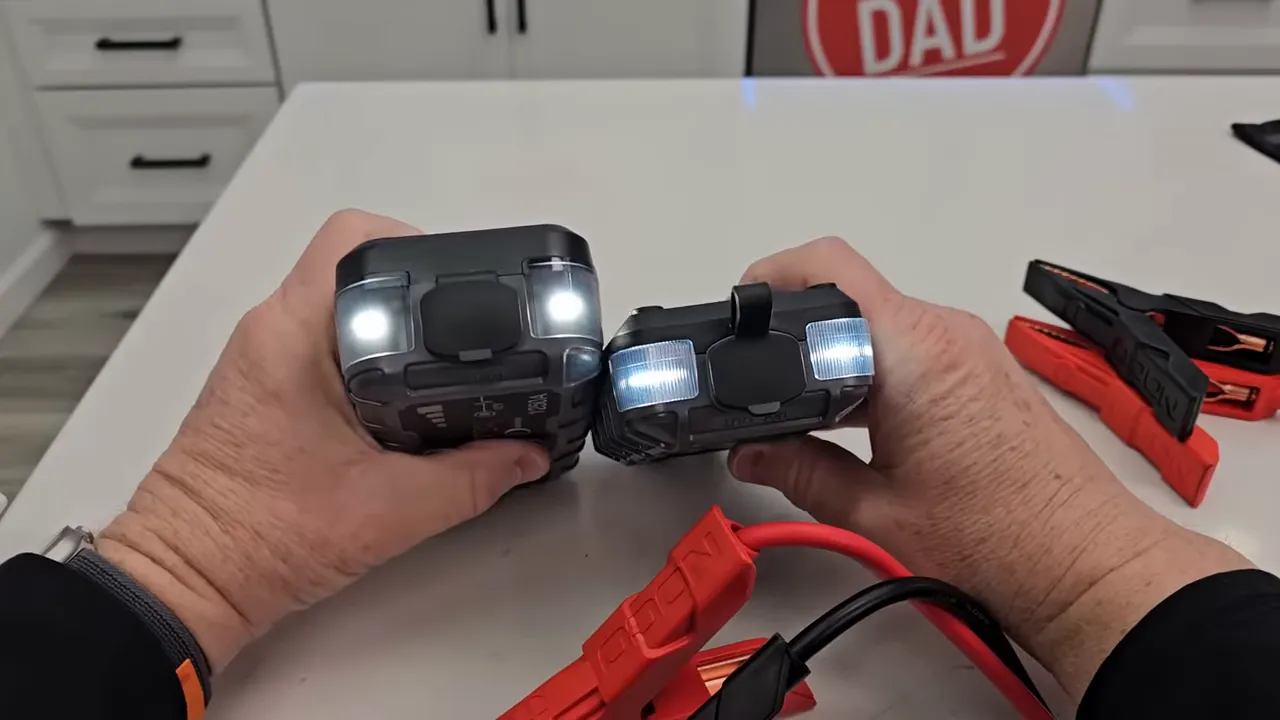
📏 Size, weight, and carry case
Size-wise the units share the same footprint — the GBX45 is only slightly thicker. Weight feels similar in-hand. Both come with a nice storage bag that fits the unit, clamps, and charging cable and cinches closed for tidy storage.
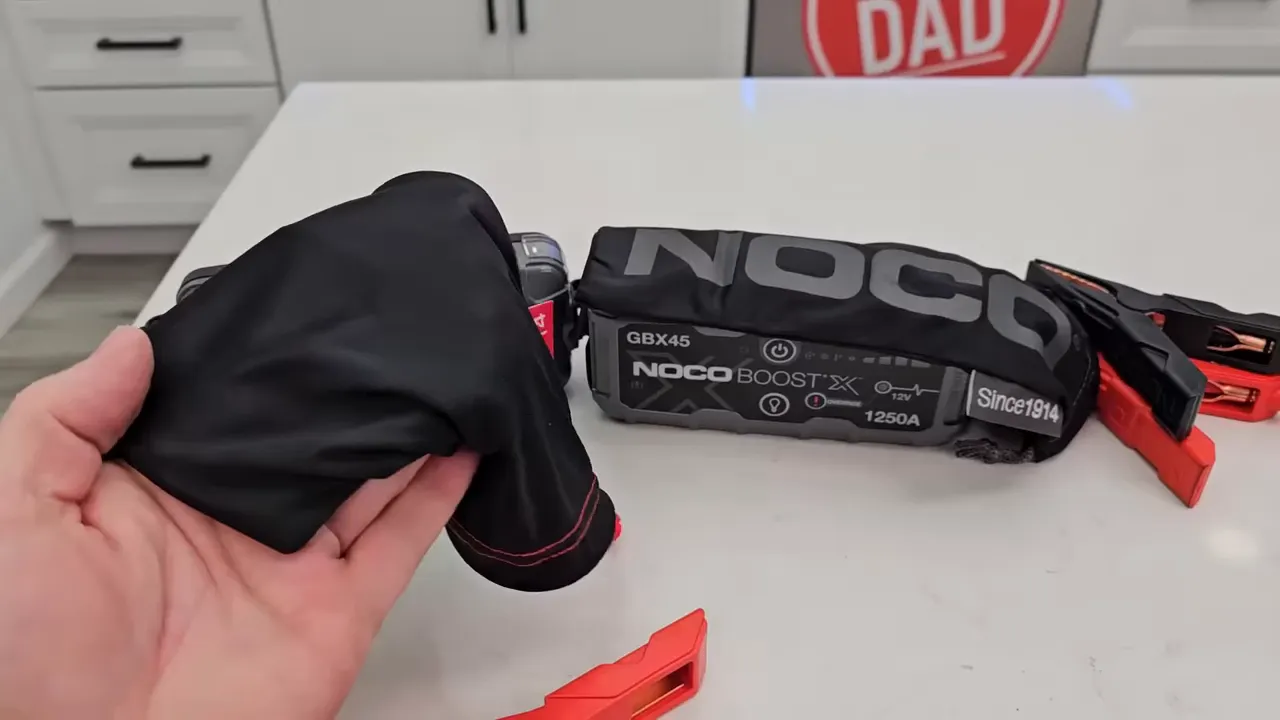
🧾 Who should pick which model?
- Pick the GBX45 (1250A) if you want the extra jump-starting power, USB-C PD fast charging in/out (60W), a clearer display with multiple status icons, and are willing to pay a bit more for the newer features.
- Pick the GB40 (1000A) if you want a proven, slightly cheaper unit that still handles many vehicles (up to about 6.0L gas / 3.0L diesel) and you don’t need USB-C output or the extra display icons.
If you want to see product specs or purchase, here are the Amazon product links:
Buy now — NOCO GB40
Buy now — NOCO GBX45
✅ Final thoughts
Both NOCO Boost units are reliable and compact emergency jump starters. The GBX45 is the more modern choice with USB-C fast charging and more power (1250A). The GB40 is still a great value and does the job well for slightly less power and USB-C input (with USB-A device output). Consider which ports and indicators matter to you, and whether that extra 250A and USB-C convenience justify the upgrade.
❓ FAQ
Will either of these start my car?
Yes. GB40 supports up to approximately 6.0L gasoline and 3.0L diesel engines; GBX45 supports up to approximately 6.5L gasoline and 4.0L diesel engines. If your engine is within those ranges, they should be capable of starting most vehicles.
How do I charge the units?
GBX45 charges via USB-C (and supports USB-C output via Power Delivery). GB40 charges via USB-C input and provides USB-A output for devices. Use the included cables. For faster recharge, use the GBX45’s USB-C fast-charge (Power Delivery) feature.
What is boost mode and when should I use it?
Boost mode (manual override) bypasses safety protections to provide maximum starting power when a battery is completely dead. Only use boost if normal start attempts fail and you understand the safety precautions. Hold the boost/override button for a few seconds to enable it.
Can I use the clamps from one model on the other?
Yes — the clamp modules are interchangeable between these two models and plug in the same way.
Does the GBX45 turn off automatically?
Yes. The GBX45 will shut off after about 60 seconds if the car hasn’t been started after you plug it in and power it on. If that happens, turn it back on and retry.
Any other tips?
- Store the unit charged and test it periodically — lithium jump starters can lose charge over time.
- Keep the carry bag with cables and clamps together so you’re ready in an emergency.
- Observe polarity — GBX45 has a reverse polarity indicator to warn you if clamps are installed incorrectly.
